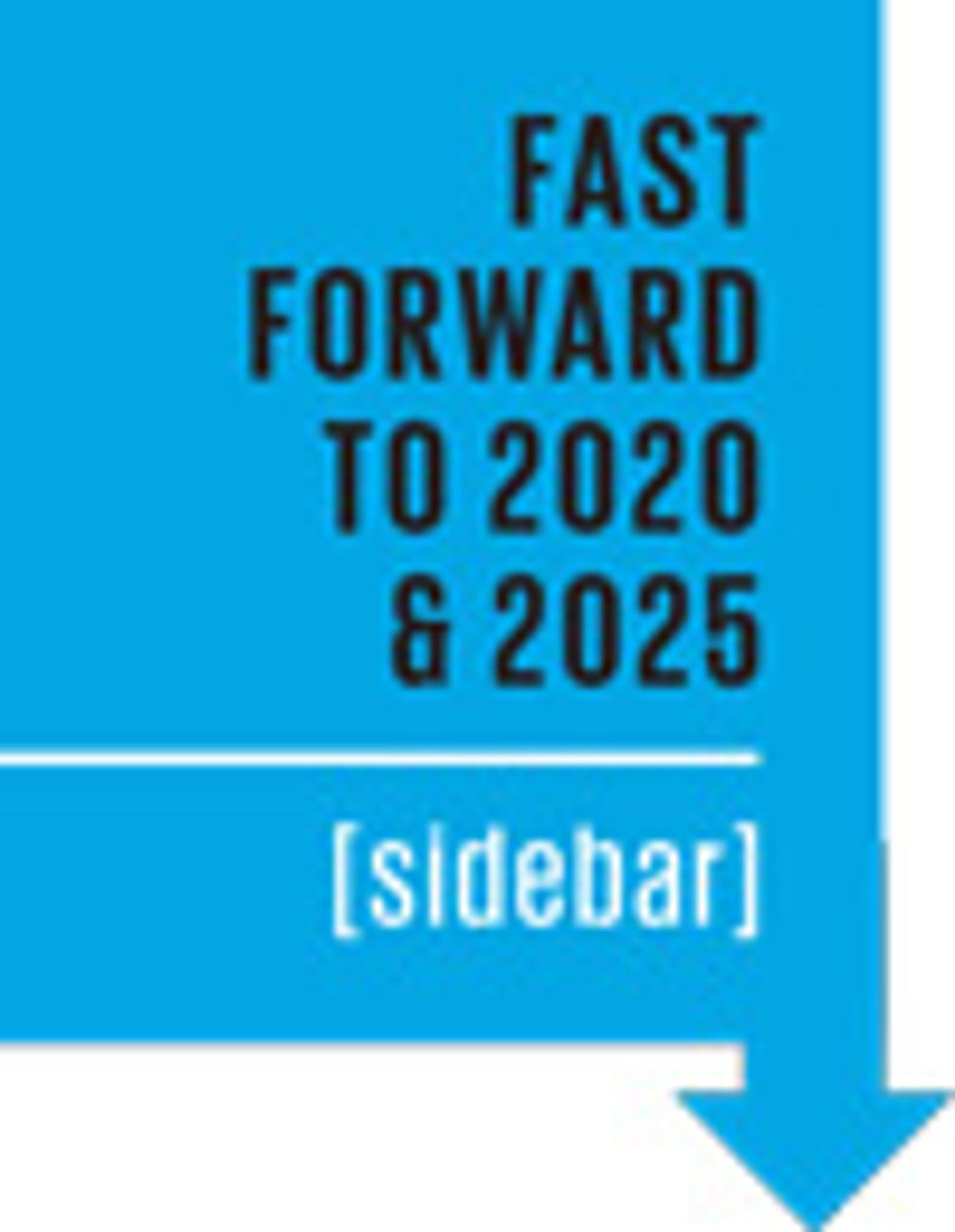Flying Selfie Bots: Tag-Along Video Drones Are Here
Sports enthusiasts are clamoring for aerial robots that can record their best moves
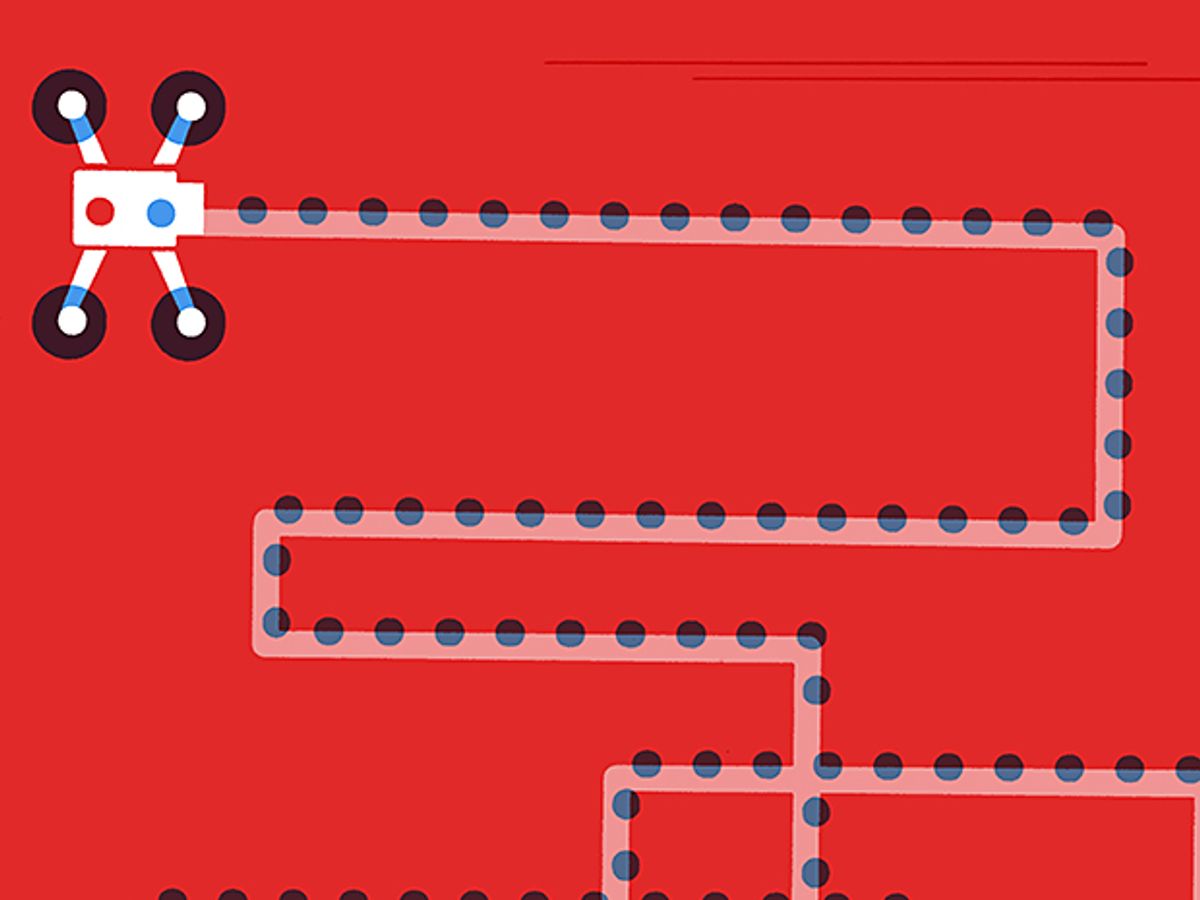
In last year’s January tech issue, I focused on the disturbing threat to privacy that unmanned aircraft seemed to pose. Who, after all, would want to be stalked by a small, camera-toting drone that was recording their every move?
Seems I got that one wrong. Plenty of people—sports enthusiasts in particular—are ravenous for selfies taken by aerial robots. And start-ups everywhere are now scrambling to develop this technology for them.
One of those companies is Squadrone System, whose genesis began in 2013, when some hopeful entrepreneurs in Grenoble, France, began thinking about making a camera-equipped drone that could all by itself capture aerial videos of you while you were skiing or snowboarding.
The idea was a natural for Grenoble, a city situated at the foot of the French Alps. And while the team proposing this idea had no experience building or flying drones of any kind, it included snowboarders and skiers—and programmers, who had a track record developing software for civil aviation.
The group later broadened its plans and decided to create a self-following drone that would work for most any action sport. In February 2014, the entrepreneurs formally established their company, settling on a design for a fast-moving six-bladed multicopter they called the Hexo+.
GoPro Annual Revenue (US $, millions)
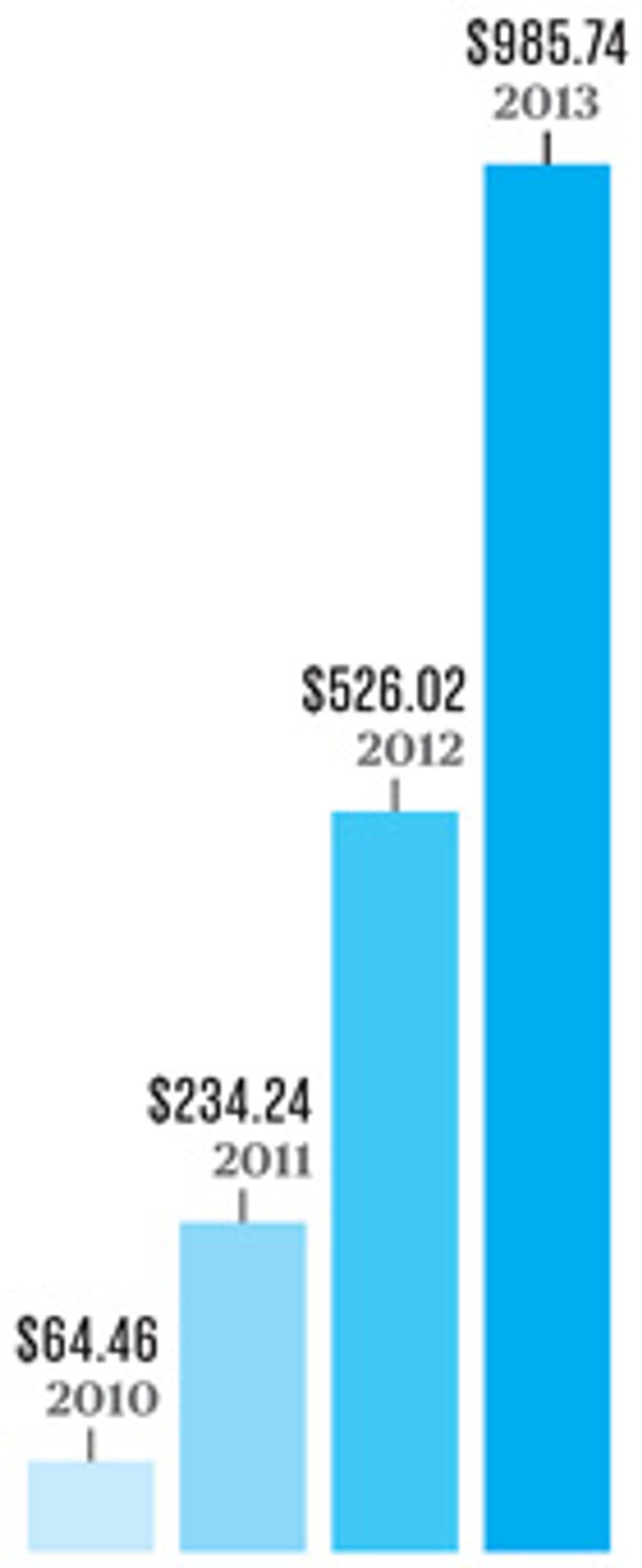
In June, they ran a Kickstarter campaign, setting their initial funding goal at US $50,000. They met that within an hour. Within three days, they had surpassed $500,000, mostly from U.S. backers. As if that weren’t enough affirmation, a competing self-following video drone being developed in Latvia—the AirDog—appeared on Kickstarter the next day, and within 48 hours it was nearing its $200,000 goal. Almost simultaneously, California-based 3D Robotics, an established manufacturer of small drones, publicly announced the availability of the “Follow Me” mode in its flight-planning software, aimed at those who wanted to use small multicopters to take videos of themselves.
By the end of July, the Hexo+ and AirDog drones had each attracted more than $1.3 million from Kickstarter backers. Without a doubt, the selfie-taking video drone was an idea whose time had come.
“The concept has been around for a long time,” says Chris Anderson, CEO and cofounder of 3D Robotics, which first demonstrated self-following capabilities in its multicopters in late 2013. And he points out that MikroKopter, a German company, had programmed one of its video drones to automatically keep a moving subject on camera several years earlier.
But the idea didn’t gain traction until a year or so ago, propelled by the plummeting prices and widespread adoption of small autopiloted multicopters, compact high-definition video cameras like the ubiquitous GoPro, and inexpensive camera gimbals that keep the shot steady even as the platform pitches and rolls in the air.
Getting all these components to automatically work together smoothly and reliably is no small undertaking, particularly if you want to keep your robot simple enough for Joe Consumer to operate straight out of the box. “We have a zero-screwdriver policy,” says Antoine Level, Squadrone System’s cofounder and CEO.
When I visited him in Grenoble in late September, he and his colleagues took me to a grassy field on the outskirts of the city to demonstrate a prototype. The drone they brought along, though, was not the sleek, six-bladed model the company will be sending to its Kickstarter backers later this year—the actual Hexo+ design was at that point still some months away from being finalized. Instead, they flew quadcopters from 3D Robotics, programmed with Squadrone System’s software, which is largely a reworking of the community-developed open-source code that 3D Robotics employs.Etienne Zwiebel of the Hexo+ team used a smartphone coupled with a radio dongle to communicate with the drone, which took off on push-button command and then hovered nearby. Next he showed me how to set things up on the phone so that the buzzing copter would follow me at a preset distance, height, and bearing.
After he handed me his phone, I set off on a run, doing my best to dodge the little drone while feeling a bit like Cary Grant in North by Northwest as he tried to outrun a crop duster. Unlike Grant, though, I had no difficulty shaking my aerial pursuer, which didn’t seem all that accurate in its video strafing runs. All I had to do to evade it was to stop suddenly or dart off in an unexpected direction.
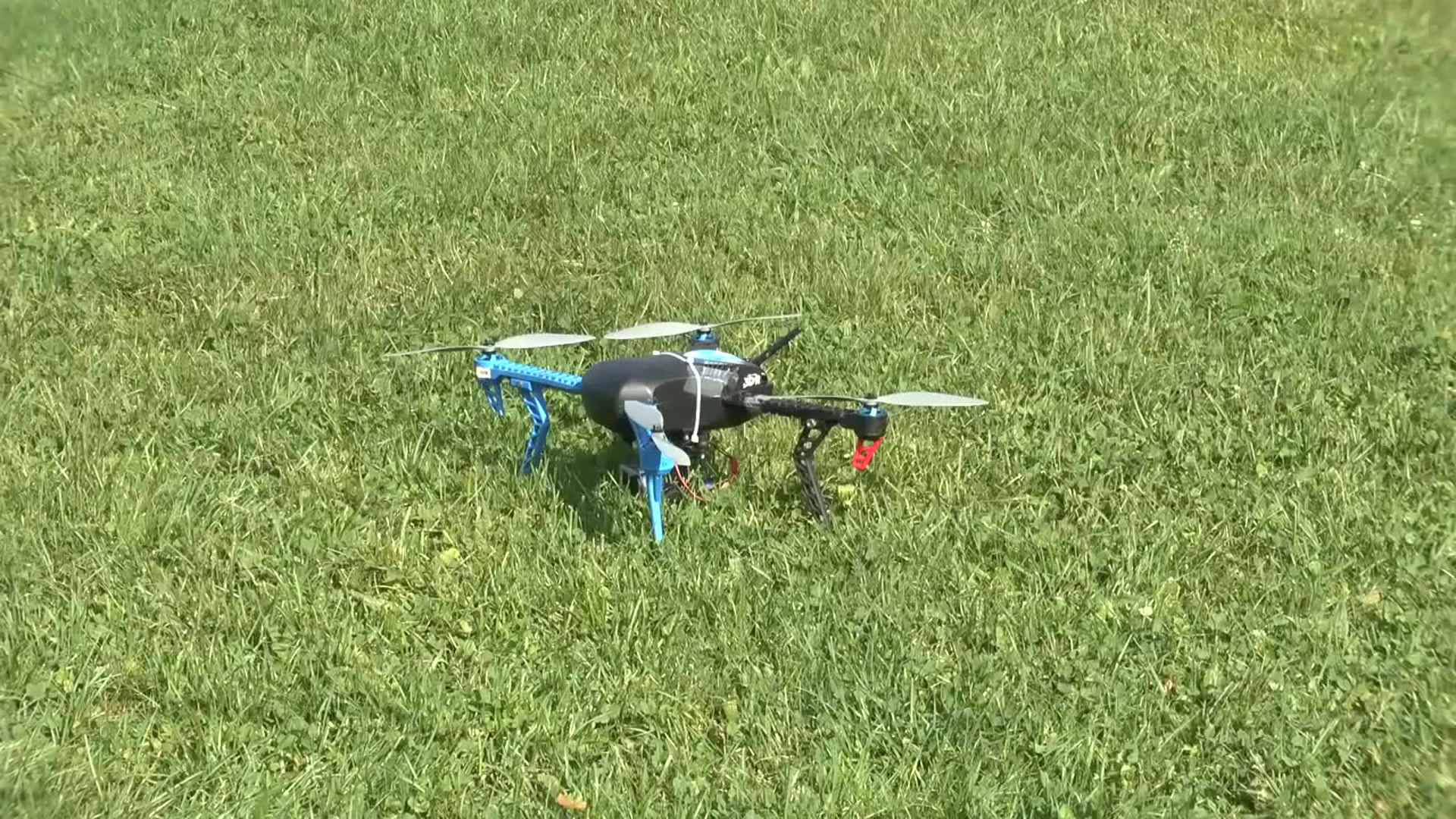
As Zwiebel and Level explained, the software is designed to anticipate where the target is headed. But as my informal tests showed, it’s easy to confound it if you act like a squirrel. The software’s “360 Selfie” feature also had some rough edges. When placed in this mode, the drone flies, as the name suggests, in a circle around its video target. But it did that merely by flying in rapid sequence through a series of waypoints. And as it reached each of these intermediate points, the craft would pitch backward briefly, as if trying to heave to in midair.
The drone’s motorized camera gimbal counteracted the unwanted pitching, but getting rid of this strange wobble and keeping the drone better targeted both need more work, as Zwiebel acknowledged. “It’s one of the challenges,” he says, “to have something that is really smooth and to tune the anticipation algorithms for one sport or another.”
Even if the drone’s algorithms are substantially improved, the limited precision of satellite navigation makes it hard to keep the craft and camera positioned perfectly. 3D Robotics, for one, hopes that real-time video processing will help, which is why it has been working to outfit its drones with microcomputers powerful enough to process live video.
According to Anderson, there are about 10 start-ups developing self-following drones right now, all from a common base: the 3D Robotics’ flight controllers and software. So the technology will most likely make rapid strides in the coming year. At the very least, there will be increasing availability—and diversity. “Everybody is adding value in their own way,” says Anderson.
The Hexo+, for example, is designed to go fast: 70 kilometers per hour. The AirDog, with its waterproof, wrist-mounted “leash,” is tailored for water sports. Makers of the backpackable PlexiDrone are targeting customers who are on the go. And those same people might later be trading in their luggable PlexiDrones for a tiny wearable self-following drone now in development, the Nixie.
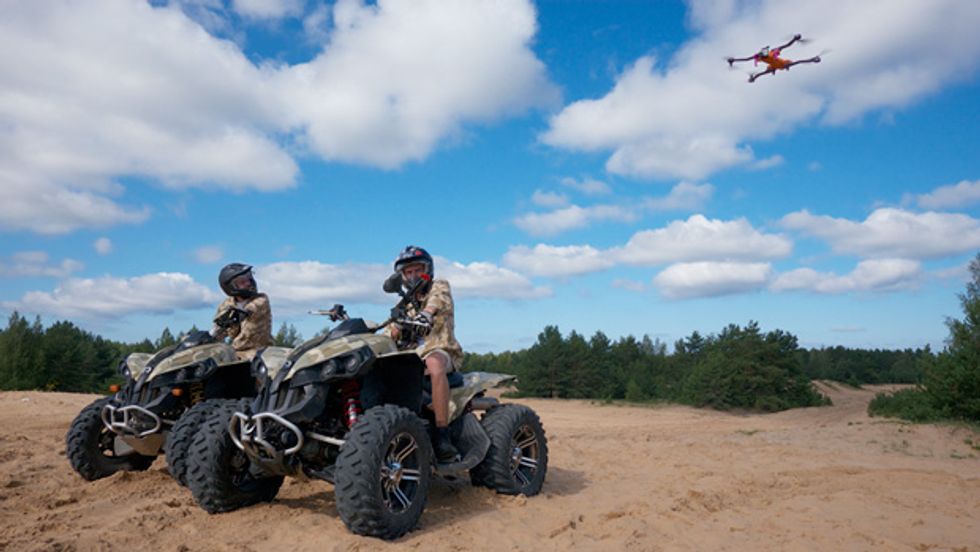
Taking video selfies hadn’t even been on the list of promising applications for small drones bandied about over the past few years. Now it’s at the top. How did that happen?
Part of the answer has to do with the regulatory hurdles these machines face, particularly in the United States, where the Federal Aviation Administration generally forbids commercial uses. Posting YouTube videos of yourself typically doesn’t qualify as a business activity, so drone makers can cater to such whims without running afoul of U.S. regulations.
Or maybe not.
In June of last year, in the midst of the Hexo+ and AirDog Kickstarter campaigns, the FAA released its interpretation of its rules for model aircraft. That interpretation asserts that flying related to a business doesn’t qualify under the hobby exemption for model aircraft. In addition, the FAA says, the operator needs to hold the aerial contraption in view at all times for it to qualify as an unregulated model. It’s hard to see how anyone can do that while performing a Haakon flip or hanging ten.
The FAA is facing legal challenges to its position here, but for the moment those are the rules. Does that then mean that self-following drones are not, in fact, legal in the United States? “You’ll have to ask the FAA,” says Anderson.
Even if the FAA technically doesn’t allow the use of self-following drones under the hobby exemption, so long as it doesn’t stop companies from selling them, these gadgets are bound to be hot items this year: Drone’s-eye-view shots are just too popular in television and film for sports enthusiasts not to want to record their own.
Indeed, these close-in aerial perspectives will no doubt become even more common as time goes by. In September of last year, the FAA granted six movie- and television-production companies permission to use small drones for their work in the United States. So if there aren’t enough dizzying drone shots on view at the first drone film festival, which will take place in New York City in February, look for what is sure to be a deluge at the second one.
Fast Forward
The Future of Personal Drones
Expect a lot more buzzing
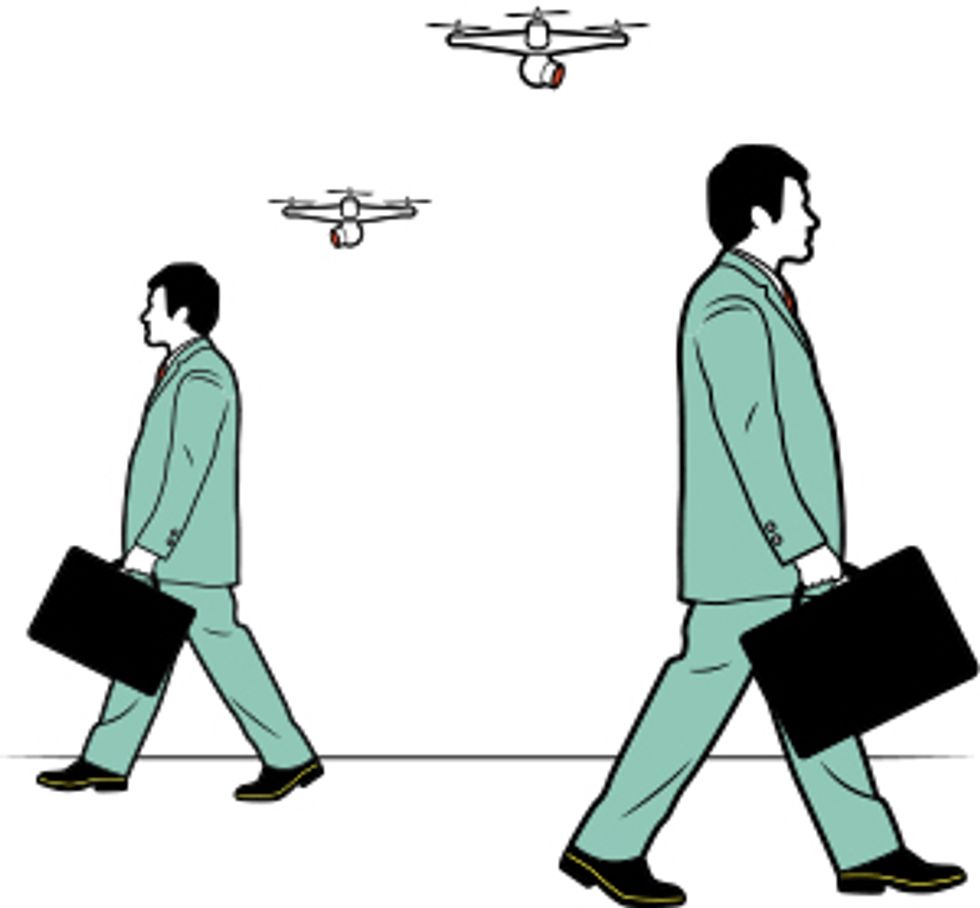
By 2020: Self-following video drones will surely get smaller, cheaper, and easier to use over the next five years, and as a consequence they will be more and more common—that’s easy enough to predict. It’s also safe to assume that over the next few years their ability to frame the shot will improve and that their owners will be able to program in complex instructions: “I’ll set it to start 100 meters up and back, then swoop down from the rear, zooming past me on my bike just 5 meters overhead, then record a 15-second pan of the surrounding scenery before hovering 3 meters off to my right at shoulder level….”
By 2025: The world of personal drones a decade from now is much harder to forecast. So rather than trying to predict what is most likely, let me suggest the future for them I see as most desirable.
A decade from now, the regulatory roadblocks preventing businesses in the United States from using small, low-altitude drones will surely have been eased. So the now-critical distinction between personal and commercial use will become less important. But that doesn’t mean the air around our heads will be full of drones following kids to the bus stop and carrying advertising banners.
Ideally, the FAA will recognize that air rights close to the ground belong to landowners. That is, drone operators would have to seek permission to fly their machines low over other people’s property. That would at once address privacy concerns while allowing farmers to use these machines to survey their own crops, for example. —D.S.
This article originally appeared in print as “Flying Selfie Bots.”
About the Author
Go here to read about more of Senior Editor David Schneider’s adventures with self-following drones.
Make Your Own Tech Predictions
How clear is your crystal ball? IEEE Spectrum has teamed up with the SciCast project, based at George Mason University, to bring its “Bayesian combinatorial prediction market” to Spectrum readers with one thing in mind: predict the future of technology. To that end, we’ve selected articles from the January Top Tech 2015 issue to give you the opportunity to match wits with the experts by making your own tech forecasts at IEEE SciCast. Registration is free, but required to set up a trading account. Select “IEEE Spectrum” under “Topics” in the registration menu. Get a feel for the tech-specific SciCast queries with this sample:
Question 105: Will Amazon deliver its first package using an unmanned aerial vehicle by Dec 31 2017?
Question 553: When will Google or Facebook debut internet connectivity to consumers using solar-powered drones?
